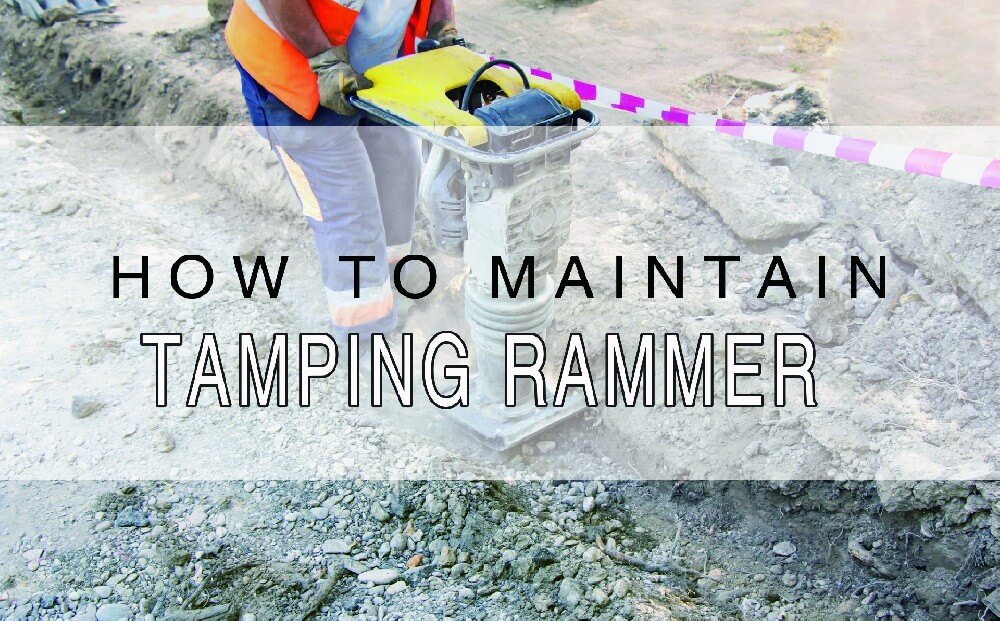10Nov 2022
table of contents
Soil compaction is one of the basic requirements on construction sites, requiring a solid, uniform and stable foundation. There are various types of compaction equipment on the market in wholesale. Some of these are jumping jack tampers, vibrating plate compactors, road rollers, etc.
A broken tamping rammer can cause project delays, costing you time and money. Therefore, it is important to understand the basic fixes for some of the most common problems in jack compactor.

Before starting the engine, do a routine visual inspection to make sure everything is working and in place, the following pre-run maintenance checks can be performed:
Inspect the general condition of the tamper for wear and/or damage. The rammer is a vibrating machine, and the bolts are easy to loosen. Be sure to check frequently that all screws and fasteners are tight. Due to the impact of vibration, some parts of the rammer are easily damaged, such as springs, shields, shock absorbers and bearings. If damaged, replace any worn or damaged parts before use.
Check the bellows for perforation and oil leakage. Remove any dust between the creases. Check the tamper for leaks and breakage.
Check the engine oil level, fuel oil level, and check whether there is any leakage or crack in the fuel pipeline and connection. The oil in the cylinders provides lubrication for critical components, otherwise the integrity of the equipment can deteriorate rapidly. The oil level can be checked through the oil window at the bottom of the fuselage. If the oil level is low, please refer to the operation manual for correct filling. Locate the filler cap on the fuel tank. Remove it and check the fuel level. If you need to fill up, make sure to fill it from a clean tank without any containers.
After each use, do the following:
Remove foreign matter such as dust or stones from the tamper and BISON engine.
Change the air filter regularly: The dusty workplace where a tamper typically works puts extra stress on the engine. Clean or replace the air filter regularly to prevent engine clogging.
Remove the hood to access the air cleaner assembly. You'll need a screwdriver to access these components. Remove the foam element under the cover, under the foam you will find a wing nut. Remove it to access the air filter (paper element) and check for any contamination and dust. If the sponge in the air filter is found to be damaged, please replace it in time. For detailed operation instructions, please clean or replace according to the instruction manual.
Clean and check the spark plug gap. Spark plugs are the most common cause of engine failure. They can wear out and fail, causing misfires that can lead to loss of power, poor fuel economy and reduced engine performance. Need to be replaced periodically.
Quarterly maintenance (200-300 hours): Clean the recoil starter, engine muffler and exhaust port. Check slings for wear, damage or abuse.
Annual maintenance: Check the oil circuit and fuel pipeline for damage, and replace them if necessary. Every two years, regardless of visible wear. Replace fuel and oil lines at the recommended intervals to keep your engine running smoothly for years to come.
Shoes are an important part of earth rammer compactor, and hitting your foot can cause damage due to some hardware being loose or mishandled. It can also sometimes cause the tamper shoe to strike the spring barrel. The edges of the foot also wear down over time.
Therefore, it is necessary to repair or replace the feet to avoid any damage in the future.
Thankfully, this part can be replaced in just a few steps - helping you get back to work and avoiding any future jobsite delays. Includes removal, repair and replacement of tampers. We recommend keeping the following tools on hand for quick and easy repairs.
• Ratchet wrench: 17mm
• Socket: ¾ (A) or 19mm
To replace the rammer machine’s foot, place it on firm ground and follow these steps:
Clean the feet to remove any dirt or debris. Remove the screw on top of the press foot.
Now lift the tamper and separate it from the board foot. Also, remove the other four lock nuts and lock washers on the base plate.
Detach the base plate and remove the remaining jam nuts and lift bolts from the base plate.
Mount the base plate by turning the lifter bolts in the tamper foot. The lifter bolts should be turned until they are fully seated in the notches in the baseplate.
Tighten the plowshare bolts to tighten and lock the nuts.
After installing the new feet, make sure the tamper feet are also properly aligned with the rest of the ram body. To check for proper alignment, lower the machine and face the front of the jack.
Align the front edge of the foot with the front of the tamper cage handle.
Now, place the tamper face down while keeping the edge of your foot flush with the flat floor.
Make sure the cage handle of the tamper is flush with the floor.
Now tighten the clamp located around the bellows.
Finally, lift the tamper straight up and visually inspect for any misalignment.
When changing, please make sure your shoes are the correct size. The most common tamper size is 11" x 13", which fits a 12" trench. Replace the tamper shoe whenever you notice edge damage.
Tamping rammer is an excellent tool for filling holes and trenches, and if you know how to maintain your jumping jack tamper, it will last longer and give better results! If you have any questions about this maintenance process of the impact rammer imported by BISON, please feel free to contact us by email or phone.
inquiry form here
BISON BLOG, All the latest news and views from Bison Machinery.